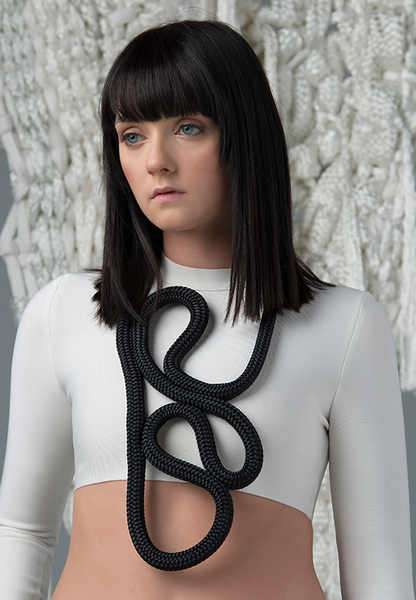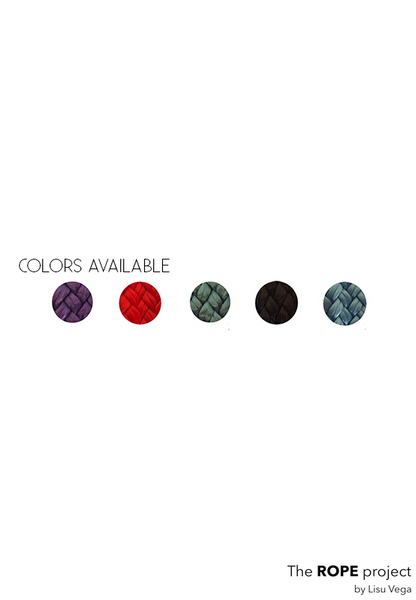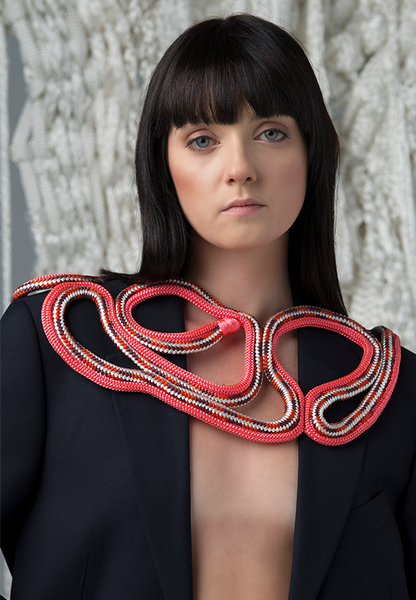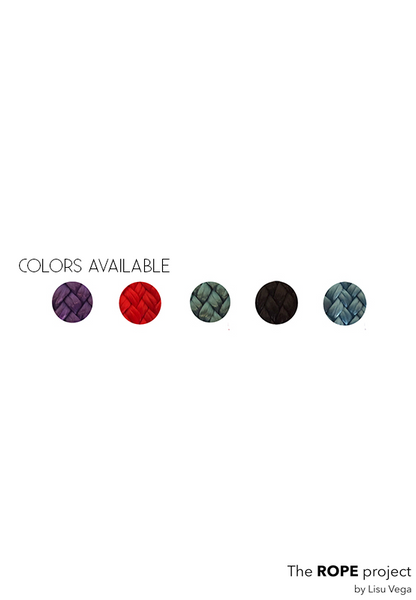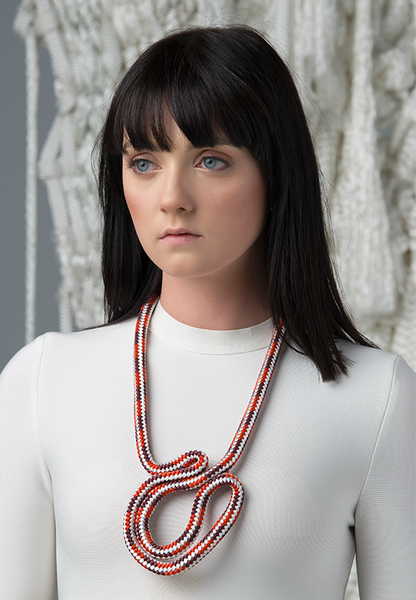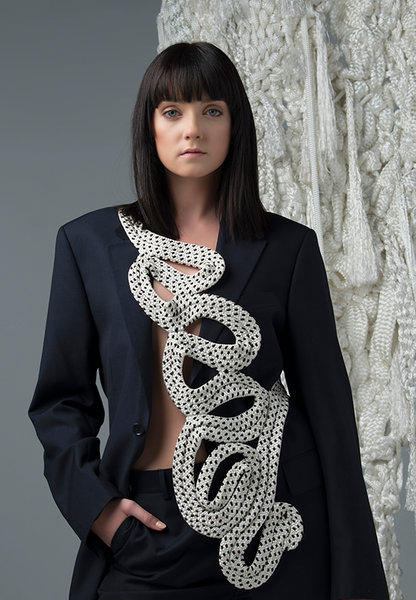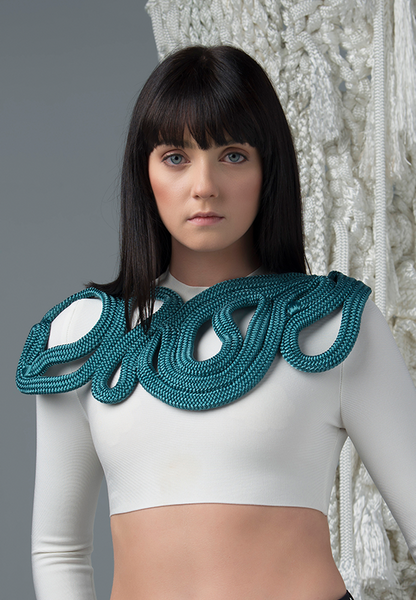Colección: LISU VEGA
Vega began her art studies in 1997 at the Julio Arraga School of Art, and later at the Neptalí Rincón Academy of Art, both in Maracaibo, Venezuela. She is an artist who became a fashion designer who came to explore the fibers and shadows of every single art piece she creates. She creates art installations with the rest of the materials from her ready to wear line. Vega feels committed to the environment and nothing is wasted in her fashion and art.
Vega uses the rope and the fabrics as a vein that crosses the body, like a brush that is drawn on the canvas, like an indigenous textile that expresses joy when inheriting the manual work of my ancestors.
In 2019, Vega was selected in one of the most prestigious fashion art exhibitions: Innovative Costume of the 21 century: The Next Generation. Bakhrushin Museum. Moscow – Russia.
The ROPE Project
"A body that turns into a canvas and lets itself be seduced by the stain of the rope; a sculptural piece, which is an extension of my artistic work."
The artist and Venezuelan fashion designer, Lisu Vega, presents R O P E, a new project that is an extension of her artistic proposal with the string, a material with which she has developed her sculptural work for three years; even with the relationship that Vega has with the cord, dates from her beginnings as a professional in experimenting engraving.
The Rope Project was born originally as a composition, an element of expression of the painting, taken to the dress. This project is made up of a series of pieces made of poly-silk that over time, took a sustainable intention, due to the upcycling process carried out during its realization: two pieces are built from the material, the original part that is presented in each creation and the white part that becomes part of the ready to wear.
Each creation is a stain that intervenes the body with various organic forms. Unique and unrepeatable pieces, versatile and light with certain points of light that recreate the artistic approach of Lisu, taken to fashion, always understanding the body as a canvas. The project is part of the DNA of the form, so it will always be present and also promises to extend to decorative and utilitarian elements of the home.

